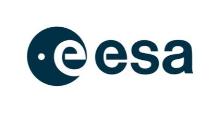MICROLITH
Exploiting the Local Microwave Heating effect to carry out the regolith sintering process
| Business | Period | Project Coordinator | Funding Scheme |
|---|---|---|---|
| Industry | January 2021 - July 2022 | RINA | ESA |
Challenge
Situ Resource Utilisation (ISRU) aims at exploting materials already present on the moon in order to facilitate the settlement of human life as well as the installation of equipment on our satellite.
In this context, producing objects from regolith would allow building a permanent base on the moon, avoiding expensive transportation of large and heavy components from the Earth.
A promising technology for regolith sintering is based on microwave radiation against the traditional magnetron and confined chamber.
MICROLITH Project Consortium will exploit the LMH (Local Microwave Heating) effect, which can be implemented by a relatively low power, to carry out the regolith sintering process.
LMH does not require a cavity or a closed chamber, and it can be implemented by a solid-state generator. After that, the experimentation can be performed only with simulants. Lunar regolith simulant is defined as any material manufactured from natural or synthetic terrestrial or meteoritic components for the purpose of simulating one or more physical and /or chemical properties of a lunar rock or soil.
Therefore, MICROLITH project aims at:
- Understanding and controlling the regolith sintering process in a laboratory environment, using terrestrial simulants;
- Developing a technique for sintering regolith simulant by microwaves technology for producing two types of bricks;
- Developing compact and mechanically stable bricks, with characteristics suitable for construction;
- Developing bricks with proper density to achieve higher porosity together with adequate mechanical stability to be used as anodes in electrolysis process for oxygen extraction.
Approach
RINA is the Project Coordinator of MICROLITH and the main activities that will be carried out together with other partners are:
- Elaboration of State-of-the-art and Sample Requirements: in this first phase, a literature research on lunar regolith and terrestrial simulants and on the sintering process and microwaves heating is carried out. At the same time, samples of simulants from the quarry of Bolsena Lake are selected and treated to introduce amorphous phase and Ilmenite with the aim of reproducing a chemical composition similar to the lunar regolith. In addition, the microwave heating technique to be implemented is identified.
- Test Setup Design and Test Plan, Procedures and Success Criteria. In this phase, all the subsystems necessary for the experimental tests are selected and / or designed. A Test Plan is defined, including procedures and success criteria for performing the experimental phase.
- Test Setup Realization: the Test Setup is assembled and the first functional tests are performed, with the purpose of verifying the system operativity and to have an initial feedback on the validity of the selected microwave heating technique.
- Test Performance and Sample Analysis: the samples are created and then analyzed to verify the compliance with the project objectives.
- Synthesis and Future Work: the objective of this activity is to identify a Roadmap for future technological developments and to define a ROM (Rough Order Magnitude) Estimation. Furthermore, a timeline for the development of a demonstrator is estimated.
Conclusion
MICROLITH Project will allow the research community to analyze and verify the feasibility of the sintering process by means of Local Microwave Heating in a laboratory environment.
The main result of the activities carried out by Project Consortium will be the production of mechanically stable bricks with characteristics suitable for construction and with proper density to be used as anodes in electrolysis process for oxygen extraction.
The outcome is an important contribution to the scientific community to understand necessary conditions for the settlement of human life on the moon.
The Contract was carried out under a programme of and funded by the European Space Agency. The view expressed herein can in no way be taken to reflect the official opinion of the European Space Agency.
